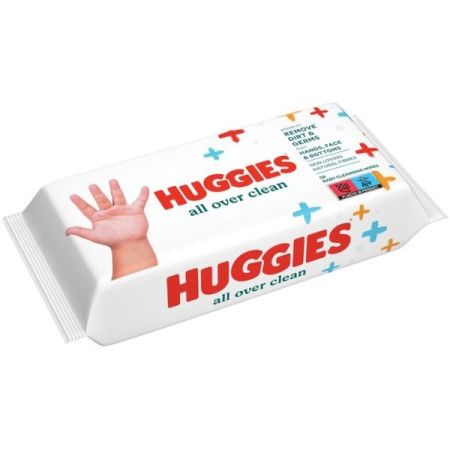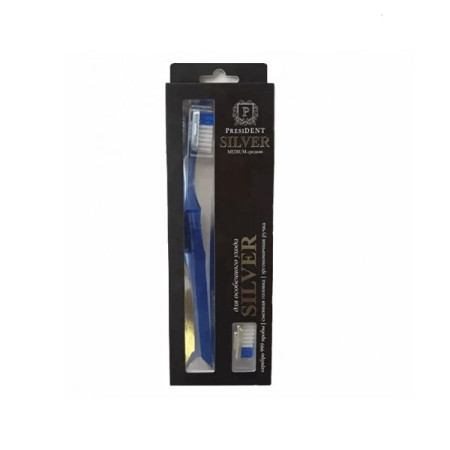Solakutan gel 30 mg/g tube of 25 g

Instructions for Solacutane gel 30 mg/g tube 25 g
Composition
active ingredient: diclofenac sodium;
1 g of gel contains 30 mg of diclofenac sodium;
excipients: sodium hyaluronate, macrogol 400, benzyl alcohol, purified water.
Dosage form
Gel.
Main physicochemical properties: clear transparent gel from colorless to yellowish.
Pharmacotherapeutic group
Dermatological products. Other dermatological products. Diclofenac.
ATX code D11A X18.
Pharmacological properties
Pharmacodynamics.
Mechanism of action
Diclofenac is a nonsteroidal anti-inflammatory drug (NSAID).
The mechanism of action of diclofenac in actinic keratosis (AK) is not known, but it may be related to inhibition of the cyclooxygenase metabolic pathway, leading to a decrease in prostaglandin E2 (PGE2) synthesis. In addition, immunohistochemical analysis of skin biopsies revealed that the clinical effects of diclofenac in AK are mainly due to anti-inflammatory, antiangiogenic and probably antiproliferative effects and apoptosis induction mechanism.
Pharmacodynamic effect
A gel containing diclofenac has been shown to eliminate AK lesions, with the maximum therapeutic effect observed 30 days after discontinuation of this drug.
Pharmacokinetics.
Absorption
The average absorption of diclofenac from the skin ranges from <1% to 12% with significant interindividual variability. Absorption depends on the dose applied and the site of application.
Distribution
Diclofenac actively binds to serum albumin.
Biotransformation
The biotransformation of diclofenac partly involves conjugation of the intact molecule, but mainly consists of single and multiple hydroxylations, resulting in several phenolic metabolites, most of which are converted to glucuronide conjugates. Two of these phenolic metabolites are biologically active, but much less so than diclofenac. The metabolism of diclofenac after transdermal and oral administration is similar.
Breeding
Diclofenac and its metabolites are excreted mainly in the urine. After oral administration, the systemic clearance of diclofenac from plasma is 263 ± 56 ml/min (mean ± standard deviation). The terminal half-life from plasma is short (1–2 hours). The metabolites also have a short terminal half-life (1–3 hours).
Pharmacokinetics of special patient groups
When applied topically, the extent of absorption of diclofenac in normal and lesional epidermis is the same, although there is large interindividual variation. The systemic absorption of diclofenac is approximately 12% when applied to lesional skin and 9% when applied to intact skin.
Indication
The drug is intended for the treatment of actinic keratoses (AK).
Contraindication
Hypersensitivity to the active substance or to any of the excipients of the drug.
Due to the potential for cross-reactions, the gel should not be used in patients with hypersensitivity reactions such as asthma symptoms, allergic rhinitis or urticaria in response to 2-acetoxybenzoic acid (acetylsalicylic acid) or any other NSAIDs.
The use of the drug Solacutane® is contraindicated in the third trimester of pregnancy (see section “Use during pregnancy or breastfeeding”).
Interaction with other medicinal products and other types of interactions
Since the systemic absorption of diclofenac in topical preparations is very low, such interactions are very unlikely.
Application features
Due to the low systemic absorption of Solacutane®, the likelihood of systemic adverse reactions with topical application of this medicinal product is low compared to the incidence of adverse reactions with oral diclofenac. However, the possibility of systemic adverse reactions with the use of diclofenac as part of medicinal products for topical use cannot be excluded if the product is applied to large areas of skin for a long time (see the instructions for use of the medicinal product containing diclofenac for systemic use). This medicinal product should be used with caution in patients with a history of acute gastrointestinal ulcers and/or bleeding or decreased cardiac, hepatic or renal function, as there have been isolated reports of systemic adverse reactions (such as renal impairment) associated with topical use of anti-inflammatory medicinal products.
NSAIDs are known to have antiplatelet activity. Therefore, although the likelihood of systemic adverse reactions is low, caution should be exercised when using the drug in patients with intracranial hemorrhage or hemorrhagic diathesis.
During treatment, direct sunlight and solarium exposure should be avoided. If skin hypersensitivity reactions occur, treatment should be discontinued.
If generalized skin rashes occur after using this medicine, treatment should be discontinued.
Topical diclofenac can be used with non-occlusive dressings, but should not be applied under impermeable occlusive dressings.
1 g of gel contains 15 mg of benzyl alcohol. Benzyl alcohol may cause allergic reactions and mild local irritation.
Use during pregnancy or breastfeeding
Pregnancy
After topical application, the systemic concentration of diclofenac is lower than with oral agents. Based on experience with systemic NSAIDs, the following is recommended:
Inhibition of prostaglandin synthesis may adversely affect pregnancy and/or embryo-foetal development. Epidemiological data indicate an increased risk of miscarriage and of cardiac malformations and gastroschisis after use of a prostaglandin synthesis inhibitor in early pregnancy. The absolute risk of cardiovascular malformations increases from less than 1% to approximately 1.5%. This risk is believed to increase with increasing dose and duration of treatment.
Studies in animals have shown reproductive toxicity. In animals, the use of a prostaglandin synthesis inhibitor results in increased pre- and post-implantation loss and mortality of embryos and fetuses. In addition, an increased incidence of various malformations, including cardiovascular, was observed in animals treated with a prostaglandin synthesis inhibitor during the period of organogenesis.
During the first and second trimesters of pregnancy, diclofenac should be used only if clearly needed. When diclofenac is used by a woman attempting to conceive or during the first or second trimester of pregnancy, the lowest possible dose (<30% body surface area) should be used for the shortest possible duration of treatment (no longer than 3 weeks).
When used during the second and third trimesters of pregnancy, all prostaglandin synthesis inhibitors carry the following risks to the fetus:
Renal dysfunction in the fetus. After the 12th week: oligohydramnios (usually disappears after discontinuation of treatment) or anamnios (especially with prolonged exposure). After birth: renal failure may persist (especially with exposure in late pregnancy or prolonged exposure).
Fetal cardiopulmonary toxicity (pulmonary hypertension with premature closure of the botal duct). This risk exists from the beginning of the 6th month and increases if the drug is used towards the end of pregnancy.
At the end of pregnancy (during the third trimester), all prostaglandin synthesis inhibitors may pose the following risks to the mother and newborn:
Possible prolongation of bleeding time, antiplatelet effect, which can occur even at very low doses.
Suppression of uterine contractions, leading to delayed or prolonged labor.
Increased risk of edema in the mother.
Accordingly, diclofenac is contraindicated during the third trimester of pregnancy (see section "Contraindications").
Breastfeeding period
Like other NSAIDs, diclofenac passes into breast milk in small amounts. However, at the recommended therapeutic dose of Solacutane®, no effects on the breastfed infant are expected. Due to the lack of controlled studies in breast-feeding women, this medicinal product should be used during lactation only on medical advice. Under these conditions, Solacutane® should not be applied to the breasts of a nursing mother or to any large areas of skin or for prolonged periods (see section "Contraindications").
Ability to influence reaction speed when driving vehicles or other mechanisms
Topical application of diclofenac does not affect the reaction rate when driving or using other mechanisms.
Method of administration and doses
Method of application
For cutaneous use.
Dosage
Adults:
Solacutane® should be applied to the affected areas of the skin twice a day and gently rubbed into the skin. The amount used depends on the affected area.
Typically, 0.5 g of gel (approximately the size of a pea) is applied to the affected area measuring 5 x 5 cm. The maximum daily dose of the product of 8 g allows for the simultaneous treatment of up to 200 cm2 of skin surface. The usual duration of treatment is from 60 to 90 days. The maximum effect is observed with a duration of treatment close to the specified maximum.
Complete healing of the lesion(s) or optimal therapeutic effect may not occur for 30 days after completion of therapy.
Elderly people:
You can use the usual dosage.
Children.
AK is a condition that is not common among pediatric patients, therefore the drug has not been studied in the pediatric population and dosage recommendations and indications for the use of Solacutane® have not been established for children and adolescents.
Overdose
However, in case of accidental ingestion of topical diclofenac (1 tube of 100 g contains the equivalent of 3000 mg diclofenac sodium), adverse reactions similar to those after an overdose of diclofenac tablets can be expected. In case of accidental ingestion resulting in significant systemic adverse reactions, general therapeutic measures normally used in the treatment of NSAID poisoning should be applied.
Supportive and symptomatic treatment should be used to treat complications such as renal failure, convulsions, gastrointestinal irritation and respiratory depression. Gastric decontamination with activated charcoal should be considered, especially if the time since ingestion is short. Because of the high protein binding of NSAIDs, specific treatments (such as forced diuresis and dialysis) are likely to be of little use in removing NSAIDs.
Adverse reactions
Common adverse reactions:
The most commonly reported adverse reactions were local skin reactions such as contact dermatitis, erythema or rash, or application site reactions such as inflammation, skin irritation, pain and blistering. Clinical studies to date have not shown an increase in the incidence of adverse reactions with age or adverse reactions specific to the elderly.
Adverse reactions are listed in the table according to the Medical Dictionary of Regulatory Activities (MedDRA) by system organ class with decreasing frequency as follows:
very common (>1/10);
often (≥1/100 - <1/10);
uncommon (≥1/1000 - <1/100);
rarely (≥1/10,000 - <1/1,000);
very rare (<1/10,000);
frequency unknown (cannot be estimated from the available data).
| Organ system | Often (≥1/100 - <1/10) | Infrequently (≥1/1000 -<1/100) | Rarely (≥1/10000 - <1/1000) | Very rare (<1/10000) |
| Infections and infestations | Pustular rash | |||
| On the part of the immune system | All types of hypersensitivity reactions (including urticaria, angioedema) | |||
| From the nervous system | Hyperesthesia, hypertension, localized paresthesia | |||
| From the organs of vision | Conjunctivitis | Eye pain, tear production disorders | ||
| From the vascular side | Hemorrhage (skin bleeding) | |||
| Respiratory, thoracic and mediastinal disorders | Asthma | |||
| From the digestive system | Abdominal pain, diarrhea, nausea | Gastrointestinal bleeding | ||
| Skin and subcutaneous tissue disorders | Dermatitis (including contact dermatitis), eczema, dry skin, erythema, edema, pruritus, rash, bullous rash, skin hypertrophy, skin ulceration, vesiculobullous rash | Alopecia, facial edema, maculopapular rash, seborrhea | Bullous dermatitis | Photosensitivity reactions |
| From the urinary system | Kidney failure | |||
| General disorders and administration site conditions | Application site reactions (including inflammation, skin irritation, pain and tingling or blistering at the treatment site) |
Temporary hair discoloration in the application area has been observed. This phenomenon is usually reversible after discontinuation of treatment.
Skin tests in the pre-treated group of patients indicated a possibility (2.18%) of sensitization to diclofenac, causing allergic contact dermatitis (type IV). The clinical significance of this phenomenon is not yet known. Cross-reactions with other NSAIDs are unlikely.
Serum tests in more than 100 patients showed no antibodies against diclofenac (type I).
Reporting of suspected adverse reactions
Reporting suspected adverse reactions is very important. Healthcare professionals and patients should report any suspected adverse reactions via the national reporting system.
Expiration date
3 years. After first opening – 6 months.
Storage conditions
Store at a temperature not exceeding 25 C. Keep out of the reach of children.
Packaging
25 g in a tube, 1 tube in a pack.
Vacation category
According to the recipe.
Producer
Mibe GmbH Arcnaymittel.
Location of the manufacturer and address of its place of business.
Münchenerstrasse 15, Brena, Saxony-Anhalt, 06796, Germany.
There are no reviews for this product.
There are no reviews for this product, be the first to leave your review.
No questions about this product, be the first and ask your question.















